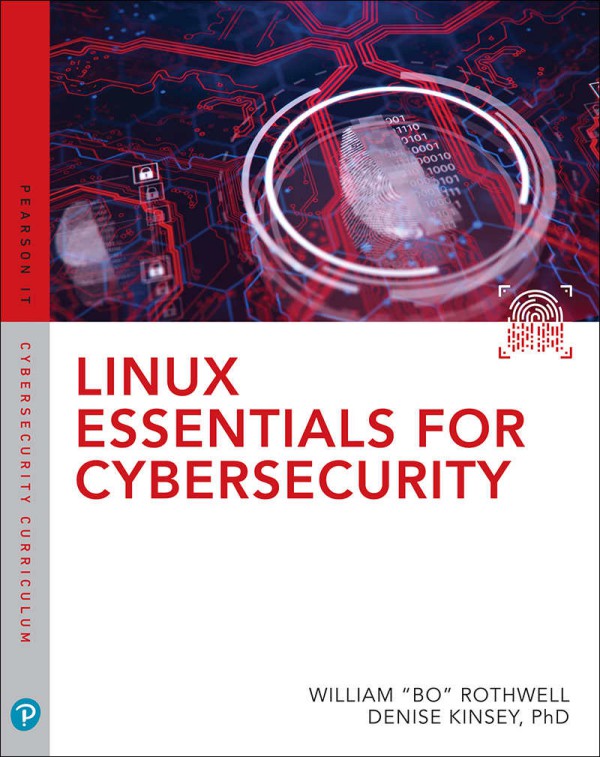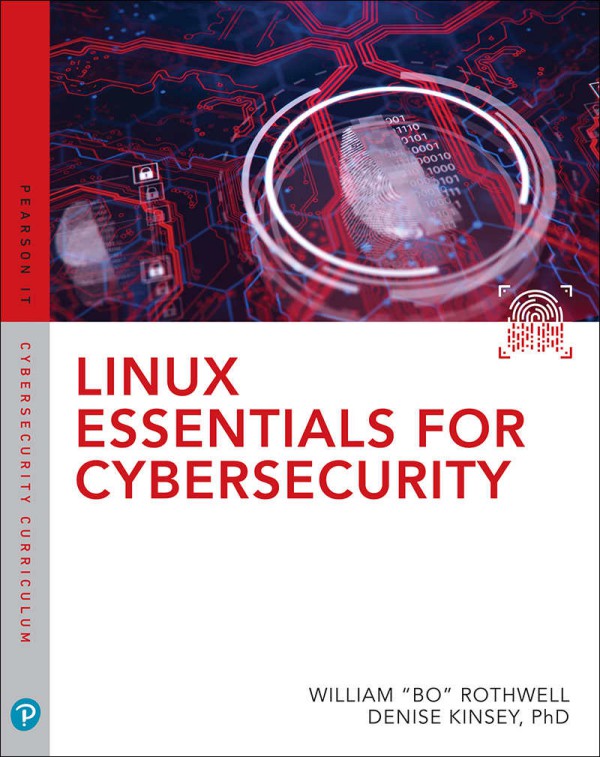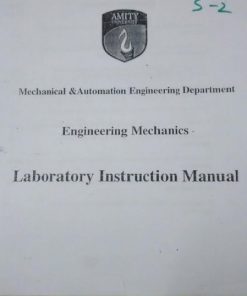Linux Essentials for Cybersecurity Lab Manual 1st Edition by William Rothwell, Denise Kinsey ISBN 0789759357 9780789759351
$50.00 Original price was: $50.00.$25.00Current price is: $25.00.
Authors:William Rothwell , Series:IT & Computer [239] , Tags:Computers; Operating Systems; Linux; Certification Guides; General , Author sort:Rothwell, William , Ids:Google; 9780789760555 , Languages:Languages:eng , Published:Published:Oct 2018 , Publisher:Pearson Education , Comments:Comments:Over 75 labs will accompany the textbook developed to be used within the Pearson IT Cybersecurity Curriculum (ITCC). Course 4: Linux Fundamentals for Cybersecurity, which introduces fundamental Linux concepts from proper set-up installation through administration of accounts, devices, services, processes, and functions. This course also covers basic scripting taught to understand tools for Penetration Testing and cybersecurity threat detection.
Linux Essentials for Cybersecurity Lab Manual 1st Edition by William Rothwell, Denise Kinsey – Ebook PDF Instant Download/Delivery. 0789759357 ,9780789759351
Full download Linux Essentials for Cybersecurity Lab Manual 1st Edition after payment

Product details:
ISBN 10: 0789759357
ISBN 13: 9780789759351
Author: William Rothwell, Denise Kinsey
From the basics to advanced techniques: no Linux security experience necessary
Realistic examples & step-by-step activities: practice hands-on without costly equipment
The perfect introduction to Linux-based security for all students and IT professionals
Linux distributions are widely used to support mission-critical applications and manage crucial data. But safeguarding modern Linux systems is complex, and many Linux books have inadequate or outdated security coverage.
Linux Essentials for Cybersecurity is your complete solution. Leading Linux certification and security experts William “Bo” Rothwell and Dr. Denise Kinsey introduce Linux with the primary goal of enforcing and troubleshooting security. Their practical approach will help you protect systems, even if one or more layers are penetrated.
First, you’ll learn how to install Linux to achieve optimal security upfront, even if you have no Linux experience. Next, you’ll master best practices for securely administering accounts, devices, services, processes, data, and networks. Then, you’ll master powerful tools and automated scripting techniques for footprinting, penetration testing, threat detection, logging, auditing, software management, and more.
To help you earn certification and demonstrate skills, this guide covers many key topics on CompTIA Linux+ and LPIC-1 exams. Everything is organized clearly and logically for easy understanding, effective classroom use, and rapid on-the-job training.
LEARN HOW TO:
- Review Linux operating system components from the standpoint of security
- Master key commands, tools, and skills for securing Linux systems
- Troubleshoot common Linux security problems, one step at a time
- Protect user and group accounts with Pluggable Authentication
- Modules (PAM), SELinux, passwords, and policies
- Safeguard files and directories with permissions and attributes
- Create, manage, and protect storage devices: both local and networked
- Automate system security 24/7 by writing and scheduling scripts
- Maintain network services, encrypt network connections, and secure network-accessible processes
- Examine which processes are running–and which may represent a threat
- Use system logs to pinpoint potential vulnerabilities
- Keep Linux up-to-date with Red Hat or Debian software management tools
- Modify boot processes to harden security
- Master advanced techniques for gathering system information
Linux Essentials for Cybersecurity Lab Manual 1st Edition Table of contents:
Chapter 1: Introduction to Linux for Cybersecurity
- Overview of Linux and Its Role in Cybersecurity
- The Linux Operating System: Basic Concepts
- Key Differences Between Linux and Other Operating Systems
- Lab: Setting Up a Virtual Linux Machine
Chapter 2: Navigating the Linux Command Line
- Introduction to the Linux Terminal
- Basic Command Line Operations
- Navigating the Filesystem in Linux
- Lab: Using Basic Commands to Manage Files and Directories
Chapter 3: Managing Users and Permissions
- Understanding User Accounts and Groups
- Setting File Permissions and Ownership
- Using
chmod,chown, andchgrp - Lab: Creating and Managing Users, Changing Permissions
Chapter 4: Linux Networking Basics
- Networking Fundamentals in Linux
- Configuring Network Interfaces
- Understanding Network Tools (
ifconfig,netstat,ping, etc.) - Lab: Configuring Network Settings and Troubleshooting Connections
Chapter 5: Securing the Linux System
- Basic Security Principles for Linux
- Configuring Firewalls with
iptables - Enabling and Using SELinux (Security-Enhanced Linux)
- Lab: Implementing Basic Security Measures
Chapter 6: Linux File System and Disk Management
- Overview of Linux File Systems
- Mounting and Unmounting File Systems
- Managing Partitions and Disks
- Lab: Disk Management and Filesystem Tasks
Chapter 7: Linux Processes and System Monitoring
- Understanding Linux Processes and Services
- Monitoring System Performance and Logs
- Tools for Process Management (
ps,top,kill, etc.) - Lab: Managing Processes and Monitoring System Resources
Chapter 8: Automating Tasks with Scripts
- Introduction to Shell Scripting
- Writing Basic Bash Scripts
- Automating Common Administrative Tasks
- Lab: Creating and Running Shell Scripts
Chapter 9: Log Management and Intrusion Detection
- Importance of Log Files in Security
- Configuring and Reading System Logs
- Introduction to Intrusion Detection Systems (IDS)
- Lab: Implementing and Analyzing System Logs
Chapter 10: Managing Packages and Software on Linux
- Installing, Updating, and Removing Software Packages
- Using Package Managers (
apt,yum,rpm, etc.) - Securing Software Installation
- Lab: Installing and Configuring Software on Linux
Chapter 11: Linux for Incident Response
- Overview of Incident Response on Linux Systems
- Collecting Evidence and Analyzing Attacks
- Using Forensic Tools on Linux
- Lab: Investigating a Security Incident on a Linux Machine
Chapter 12: Advanced Linux Security Tools
- Introduction to Linux Security Tools (Wireshark, Nmap, etc.)
- Using
sshfor Secure Remote Access - Advanced Firewall Configuration
- Lab: Exploring and Using Advanced Linux Security Tools
People also search for Linux Essentials for Cybersecurity Lab Manual 1st Edition:
linux essentials for cybersecurity lab manual pdf
linux essentials for cybersecurity pdf download
do you need linux for cyber security
what is linux essentials
You may also like…
eBook PDF
Engineering Mechanics Lab Manual 1st edition by Mohit Bhoot Gupta ISBN 9386102331 9789386102331












